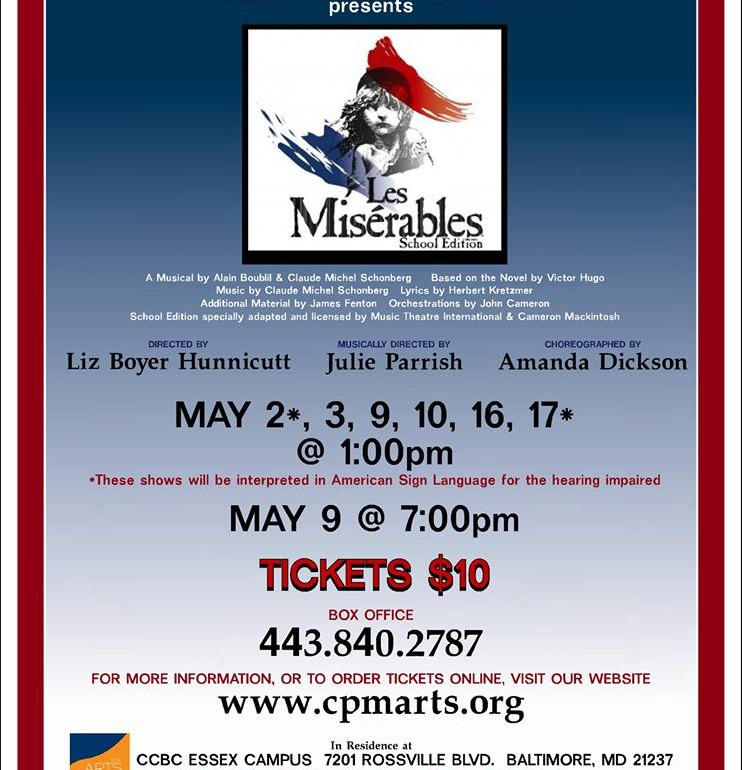Red! The blood of angry men! Black! The Dark of ages past! Red! A world about to dawn! Black! The night that ends at last! Night has ended and the world is dawning at the Children’s Playhouse of Maryland. Painted in the bold barricade colors of red and black, and just a season behind the sensational trend of producing the internationally acclaimed musical, CMP brings the iconic production of Les Miserables to the stage for Baltimore to enjoy. Featuring students ages seven to seventeen, CMP presents the student edition of the performance, but it is no less brilliant or complete than any ordinary run of the show. Directed by Liz Boyer Hunnicutt, with Musical Direction by Julie Parrish, the stirring emotions of this wondrously striking show finds a new home in the hearts of students and adults alike watching this production.
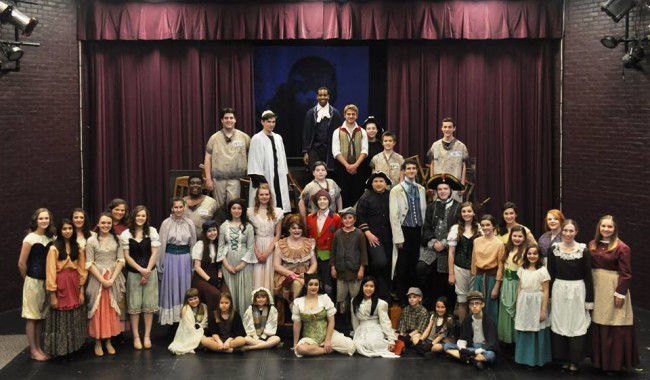
Wary is not an emotion that needs be present when hearing the words “children” and “Les Miserables” in a sentence in regards to the production at Children’s Playhouse of Maryland. Though their stage is small— they perform in the lecture hall of the administration building— their performance is powerful and packed with exceptionally talented student performers who really bring vibrancy and exuberance to the beast of a musical that Les Miserables can be. Scenic Artist Laura Miller really draws the cast into the reality of the show, working the space with Set Designer Diane Smith to appropriate a functioning barricade, bridge, and gate for the scene at Rue du Plummet. Smith and Miller give the show a radiance all its own with their finally honed skills, ensuring that the artistically designed side of the production has all of the critical components— like a gate with bars that Marius can squeeze through or an earnest bedraggled barricade of smashed wooden furnishings— to make this musical its finest.
Smith also serves as the show’s Lighting Designer and deserves another thorough round of applause if for nothing else but her masterful handling of the events at the end of “Javert’s Soliloquy.” In traditional fashion and homage to the ‘special effects’ of the original Broadway production, Smith captivates the audience in that moment with her use of impeccably timed strobe lighting. Other precision moments of Lighting Design pepper the performance throughout, augmenting but not upstaging the crucial emotional elements of bigger numbers, like the end of Fantine’s solo “Come to Me” and the final moments of Marius’ “Empty Chairs at Empty Tables.”
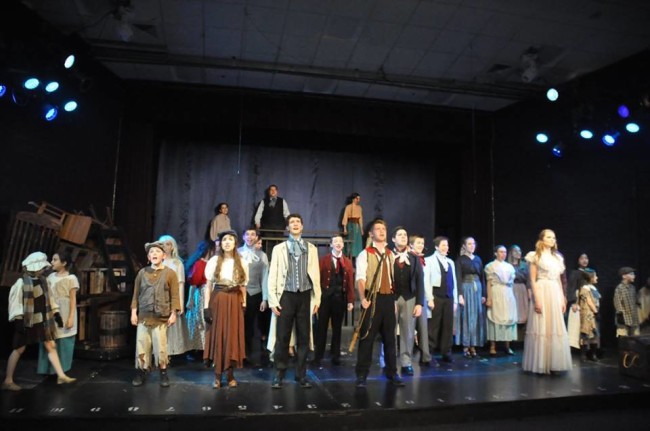
Respect is due in waves to Costume Coordinators Sharon Byrd and Amanda Dickson, who are assisted by Hair and Makeup Artist Tiffany Flaharty. The aesthetic success of a show can often be made or broken by the success of the couture. Byrd and Dickson, with Flaharty in tow, outfit the production exceedingly well. 19th Century France is well represented across both genders and all classes, from factory workers and the elite to the vagrants and vipers of the streets. The aging techniques applied to both Jean Valjean and Javert from the creative mind of Flaharty are, in earnest, impressive as she progresses young students from strapping men in their prime through the ravages of the seasoned years.
Musical Director Julie Parrish sets the tone for the show early on and that tone is one of great quality. Parrish concocts sounds worthy of the musicals creators. Full, robust ensemble voices populate the well-recognized company numbers like “One Day More” and “Master of the House.” And when the rabble and urchins of France take to the streets for “At the End of the Day” the sound of those voices is visceral and intense, labored with ravishing desperation that might easily surge into the audience and pick us clean just to stay alive. Parrish emotionally informs each of the musical numbers with a strong sense of clarity, particularly the catty nasty nature of “Lovely Ladies” where the female ensemble members really drag their claws into the notes as they sing.
Director Liz Boyer Hunnicutt achieves levels of impressive performance from her cast across the board whether they are ensemble members, cameos, supporting roles, or leading actors. But it’s Hunnicutt’s layers of deep meaning driven into the staging of certain moments that really strike home and set this production apart from others like it. Her use of a rotating barricade is not only an homage to the original Broadway concept of staging, but shows a striking moment that is simply too stunning not to mention. Spoilers do follow in the next three sentences, so if you’ve not seen the show or don’t know the outcome of the battle at the barricade, it’s best to skip on to the rest of the review. After the final falling at the barricade, when Javert enters to search among the fallen students, the set is spun to reveal the brutally slain Enjolras (again, props to makeup designer Tiffany Flaharty) alongside the cold dead eyed body of little Gavroche. In an instant the barricade is spun once more to reveal Javert, now alone and devoid of all the bodies. The striking representation that their lives mattered so little— a constant point of contention during the scenes of student rebellion— that they simply vanished in an instant is the epitome of conceptualization when it comes to directing.
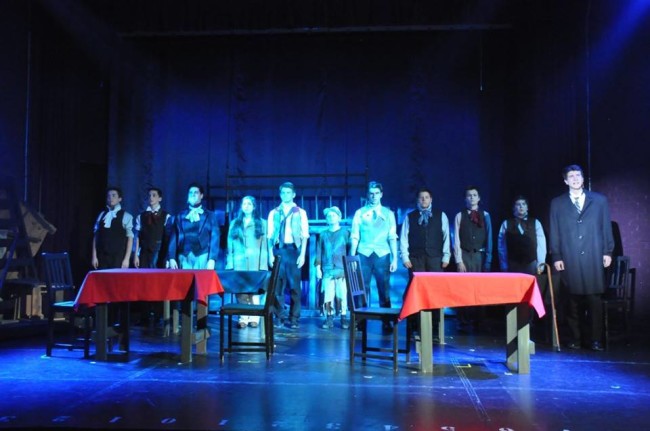
Hunnicutt is also to be praised on her staging of the cart scene, which is often described as the most difficult and unsuited 32 bars of music in the show, and her symbolic, albeit harrowing, blocking for “Empty Chairs at Empty Tables.” The glances shared between Enjolras, Eponine, and Gavroche with Marius in that moment strike hard to the core of the soul and underscore the epitome of Marius’ feelings in that song. Well rounded in her understanding of the musical and how to really make emotional moments soar as well as highlight the essence of intent through blocking and staging, Hunnicutt is perfection directing this piece.
There are over 40 young performers involved in the performance on stage, not to mention those running tech behind the scenes, and every single one of them is well worth praising for their sensational work, inspiring talent, and determined dedication and commitment to the show. Cameo voices of note include Athena Claudio, who sings the battle cry of the Army Officer, “…you at the barricade listen to this…” and carries that strange discord of lines through with force. Theo Halligan and William Hornby, who play Courfeyrac and Combeferre respectively, have featured line solos in “Do You Here the People Sing?” which are worth praising for their stoic and sturdy sounds. Hornby doubles as the show’s bishop and delivers a clear rendition of his solo lines during “Prologue,” sounding holy like a resonate church organ.
Factory Girl (Emily Small) and the Factory Foreman (Jimmy Yarsay) also deserve a mention as does Little Cosette (Maia Vong.) Small has only a few lines during the tail end of “At the End of the Day” but her biting and precise delivery of these lines, not to mention the vicious fight wherein she engages Fantine, make her incredibly memorable. Yarsay pops up nearly every place an ensemble member is needed, including the chain gang, Thènardier’s gang and the rebellious student revolution, with a beautiful and fulfilling vocal sound that merits his quintupled casting. Vong, who is featured with one of the more iconic numbers of the piece, “Castle on a Cloud” makes the song sweet and sad with her pretty voice whilst sweeping the floor of the terrible Thènardier inn.
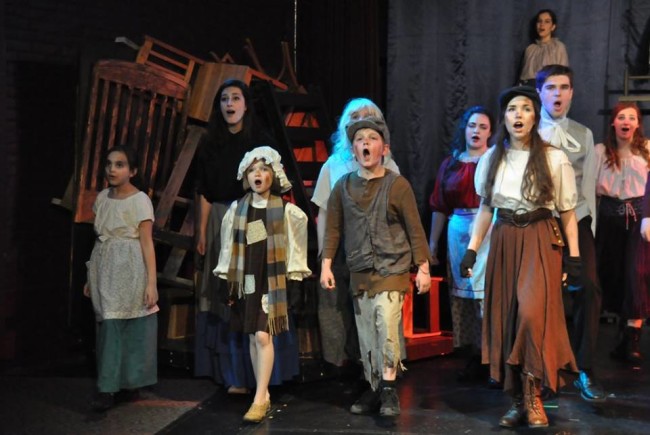
Watch out for the pup with panache, that’s little Gavroche (Dylan Morrison) of course. With a great deal “of pride, spit-polish, and chutzpah, Morrison is the spitting image of the tiny tough tiger the character is known to be. His singing voice is up to snuff as is his rough-n-tumble street-savvy English accent. Watching his final scene at the barricade is a brutal exercise in emotional self-restraint as he lives in the moment so thoroughly that you completely forget you’re watching a musical. Grantaire (Will Foohey) is another student among the rebellion whose voice stands out in a fashion most pleasing. Foohey, who also appears at the top of the show as one of the arresting constables, leads “Drink With Me” down the somber path that the song is known for, his fluid mellow voice filling in the emotional gaps of the lyrics with ease.
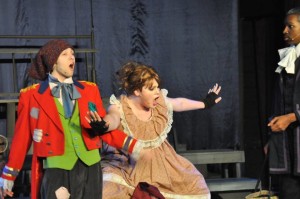
While the majority of Les Miserables is as emotionally downtrodden— however beautiful— as the title would suggest, the show is not without its comic relief. Arriving in the form of Thènardier (Philip Merrick) and his Madam (Tiffany Flaharty), these comic cad duo has the humor thoroughly covered in this production. Merrick makes a roustabout rousing good time out of “Master of the House” and even though most of “Dog Eat Dog” is cut from the student edition, the verse he sings is quite disturbing. Merrick and Flaharty crack wise and then crack up for “Beggars at the Feast” and really bring nice humorous elements before the dramatic and heart-rending conclusion of the show.
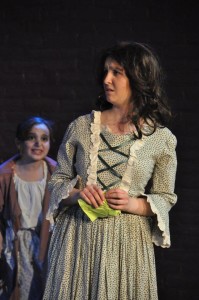
Three sensational females find themselves taking on the three leading lady roles in this production. Sheridan Merrick, Claire Iverson, and Ilyssa Rubin, who play Fatine, Cosette, and Eponine respectively, form a triangle of vocal sensationalism in this performance. Merrick, whose heartbreaking rendition of “I Dreamed a Dream” stirs tears to the eyes, goes out with an emotional force, maintaining her character’s integrity and circumstance during “Come to Me.” Her solo feature during the “Finale” is equally moving as her first solo number and the pristine sustains she delivers in her higher notes is impressive. Iverson achieves the impossible with Cosette. Not only is her singing well on point, both technically and emotionally, but she manages to create a warm and welcomed depth in the otherwise vapid ingénue character. A simple glance of consternation or a hint of worry that crosses her facial features during crucial moments adds a multitude of layers to this otherwise simple character.
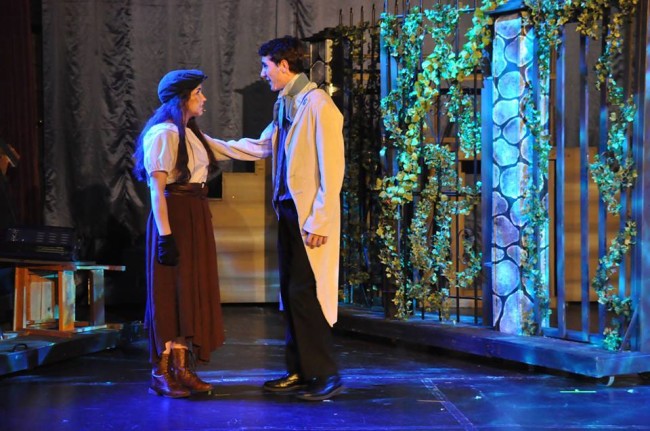
Iverson shares duets with Marius (Matthew Demetrides) like “In My Life” and a “Heart Full of Love” that are vocally sublime as she climbs vocally into the rafters to achieve the “ingénue-in-love” sound during these songs. Rubin, who also shares a duet with Demetrides, and fills out as a trio voice in both the aforementioned songs, delivers a phenomenal performance as Eponine. Her solo performance of “On My Own” is emotionally gripping and her blasted sustained belt near the end of the number is captivating. Listening to her and Demetrides duet of “A Little Fall of Rain” draws tears to the eye. Rubin never compromises her vocal integrity during this harrowing duet, but gives the character exactly what is needed to complete the scene as written.
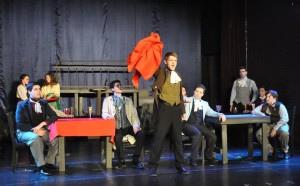
Josh Starkey is stirring the blood in the audience’s veins as he tackles Enjolras in this performance. Listening to the conflagration of ferocity and excitement in his voice as he calls to order a revolution for “Do You Hear the People Sing” and his solo during “One Day More,” it is easy to be struck to the bone in a moment of breathless delight by his singing. The intensity with which he follows through his sustains and the emotion he imbues into “Red and Black” are nothing short of astonishing.
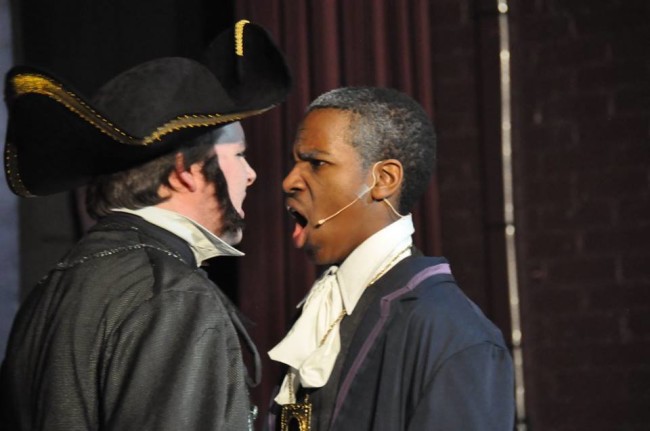
The leaves only the protagonist and the antagonist of the story; the well known names of Jean Valjean (Jonathon O’Neal) and Inspector Javert (Zach Miller.) Constantly at war as they chase one another through the years, the pair carries the story on their shoulders with brilliant aplomb. The way the pair go at one another in recitative both after the cart scene and then with the ballad-style “Confrontation” number featured in the hospital scene is quite remarkable. Playing match for match, line for line, and note for note the other’s opposite, Miller and O’Neal achieve something brilliant in this pair of foils.
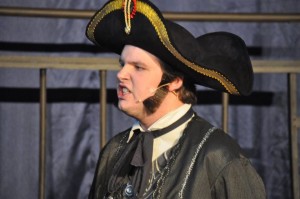
Miller’s portrayal of the ruthless inspector is emotionally accurate to within a breath of the iconic role. His articulation and calculated delivery of the numerous recitatives that plague the score is astonishingly well delivered; a complex achievement for even trained professionals. Miller’s strengths come from his emotional grounding of the character, particularly during “Soliloquy” wherein the carefully constructed façade that he has created for the stoic inspector comes flying apart in time with the musical shift of the number. A remarkable characterization and internalization of the deep inner life of the character that goes beyond what is given in the lyrics, Miller as Javert is the epitome of how the character is meant to be played.
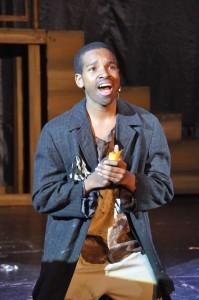
O’Neal delivers an exceptionally emotional Jean Valjean. Every step of his plight, every twist of his story is felt keenly in his singing, witnessed deeply in his facial expressions, and heard soundly in his voice. “Bring Him Home” as well as “Who Am I” are doused liberally in emotional waves that soothe and stir the audience simultaneously. Truly present and sensationally active in the role, O’Neal discovers each moment with refreshing vigor, transitioning through the character’s many stages with the same vocal ease that he transitions through the show’s many vocal shifts for the character.
An honest production that reminds theatergoers of the beauty that is Les Miserables, the Children’s Playhouse of Maryland is cultivating the next great generation of theatrical performers and this production is an exceptional example of what Baltimore and the areas surrounding has to look forward to in years to come.
Running Time: Approximately 2 hours and 40 minutes with one intermission
Les Miserables plays through May 17, 2015 at Children’s Playhouse of Maryland in the Lecture Hall of the Administration Building at the Community College of Baltimore County Essex Campus— 7201 Rossville Boulevard in Baltimore, MD. For tickets call the box office at (443) 840-2426 or purchase them online.

